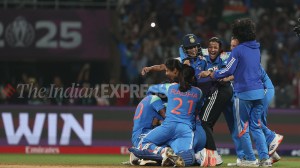The Hemming Way
Beginning with three quilters,Shruti Dandekars India Modern Quilt Guild now has 250 members sewing fabrics and stories together.
Beginning with three quilters,Shruti Dandekars India Modern Quilt Guild now has 250 members sewing fabrics and stories together.
For Sangli-based Shruti Dandekar,even odd pieces of fabrics tell a story. A cut here,a snip there,a stitch here and a tug there and Dandekar is able to transform these pieces of fabrics into warm,snug and intricate quilts.
Dandekar,who started the India Modern Quilt Guild (IMQG) in September 2011,is an architect by profession. But more than three years ago,when she saw interesting quilts online,she took up quilting as a hobby. IMQG,which started off with just three quilters,now boasts of over 250 members from all over India. It is a part of the international agency,Modern Quilt Guild,which is run by Alissa Carlton,a renowned quilter and also a part of the TV series Project Runway.
Quilts have been a part of our tradition. The godhadi,which is made of old saris and clothes,has been a part of the Maharashtrian household since ages, says Dandekar,adding that the godhadi is recognised all over the world as a modern quilt.
A traditional quilt is a type of bed cover composed of three layers of fibre a woven cloth top,a layer of batting or wadding and a woven back,combined using the technique of quilting. It is distinguishable from other types of blankets because it is put together with pieces of cloth. Quilters sew through all layers either with hand or with the help of a sewing machine. A rocking,straight or running stitch is commonly used and these stitches can be purely functional or decorative and elaborate. Quilting is done to create bed spreads,wall hangings,clothing and a variety of textile products,apart from its traditional uses, adds Dandekar.
She adds that most modern quilts are made from cotton fabrics and are much lighter. Modern quilters have also embraced new options available in textiles bold colours,graphic prints,largerscale prints and Japanese fabrics, she says.
One of the challenges that Indian quilters face,says Dandekar,is sourcing the perfect material. She prefers to scour local markets and experiment with different materials. I have heard it from clients all over the world that Indian fabrics not only look exotic but are also softer and sturdier, says Dandekar,adding that sometimes,she has to source a particular fabric online,according to the specifications of her client.
The quilts may be pretty to look at but they take up a lot of time and energy. A baby quilt takes up to 20 hours to make,while a twin quilt takes around 85 hours. And Im not even counting the designing time, says Dandekar. The finished products are priced between Rs 1,000 and Rs 3,000 for a baby quilt and Rs 8,000-10,000 for a twin quilt. But thats where Indian quilters face another challenge. Dandekar thinks that Indians do not want to spend much on a fancy quilt. People will spend Rs 3,000 for a Nike T-shirt but dont easily accept the same price for a baby quilt where the fabric is specifically bought,custom-designed and painstakingly made, she says.
One of the more interesting projects that Dandekar has done recently is to create a portrait quilt of her great-grandfather. It was for the centenary celebration of our family business, she says proudly.
Now,she wants to host more workshops that focus on different quilting techniques. In April 2012,we hosted our first event in Pune and in July 2012,we hosted one in Mumbai. In April and May,were planning to host workshops in Bangalore,Pune and Mumbai, she says.







